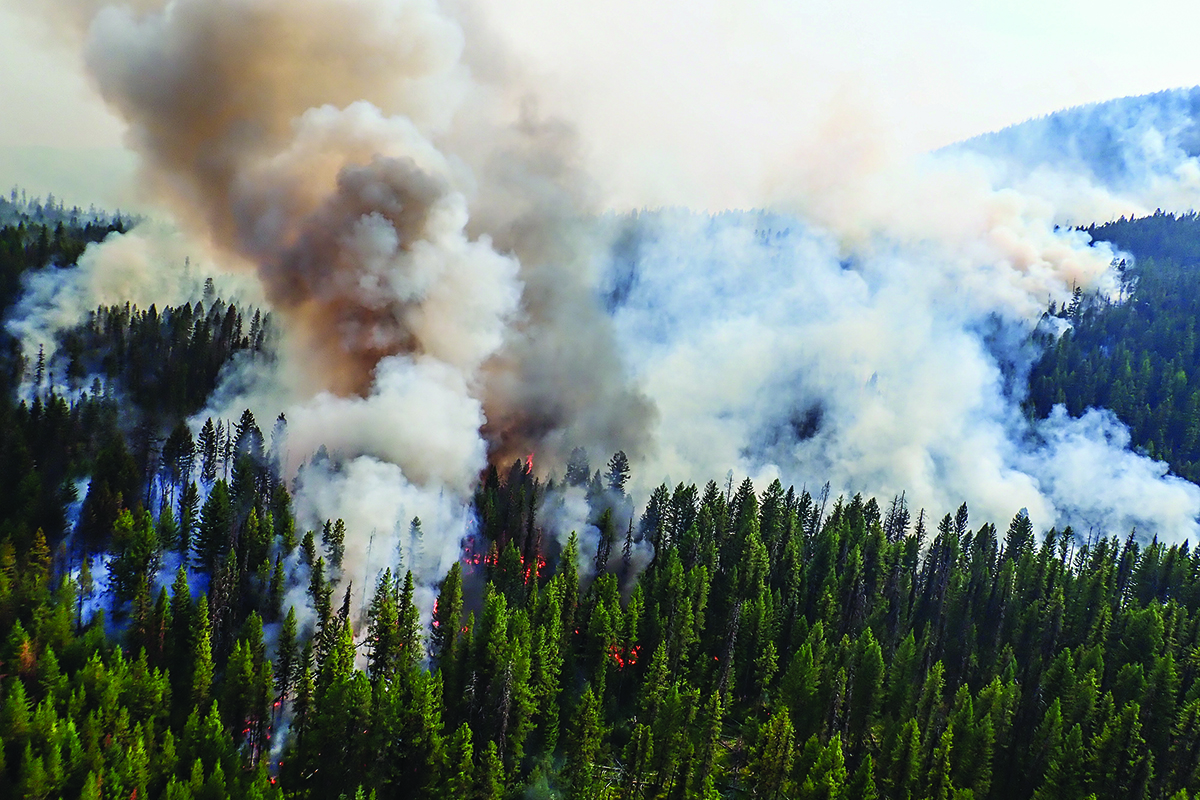Flathead County ‘Luckier’ Than Some Areas as Worrisome Fire Season Approaches
Top fire official says recent rains provide some reason for local optimism despite statewide drought, record heat and ominous projections
By Andy Viano
As the West braces for what could be another record wildfire season, Flathead County has reason to believe it may get “lucky” by comparison according to the county’s top fire official, who is still urging caution with the dangerous wildland fire season right around the corner.
Fire Service Area Manager Lincoln Chute was upbeat last week, even as a record heat wave baked the county, prognosticators continued to issue dire warnings and Gov. Greg Gianforte declared a statewide drought emergency. Montana’s fire season typically arrives in earnest in late summer but drought conditions have already contributed to a handful of significant fires in the state, including the nearly 30,000-acre Robertson Draw fire south of Red Lodge that was 65% contained as of July 1.
Here in the Flathead, though, some rainy June days have provided just enough moisture for Chute to say the Flathead is “a lot luckier than the rest of the state,” an assertion backed up by the projections like one published by the Montana Department of Natural Resources and Conservation that Gianforte released to the public on June 30.
That report, the Montana Drought Forecast, showed that 91% of Montana was experiencing some level of drought, with the worst conditions in the north-central and eastern parts of the state. Below-normal precipitation and above-average temperatures are expected to persist in Montana through July and the National Interagency Fire Center (NIFC) pegs nearly the entire state’s potential for significant wildland fire at “above normal” this month.
But a small island of land near the Rocky Mountain Front that includes part of Flathead County evades that distinction in July largely because a couple multi-day rains in mid-June have kept moisture levels in live fuels — things like grass and trees — at an “OK” level, according to Chute. That might be reason for a small bit of optimism, but even Chute says fire is coming, as it always does, to Northwest Montana, and there are some underlying measurements that present a less sunny outlook, especially later in the summer.
Flathead County’s dead fuels — things like fallen trees — are carrying a below-average amount of moisture and are sitting at levels similar to 2017, when a number of significant fires burned, including the Sprague Fire in Glacier National Park that destroyed the Sperry Chalet. Moisture content in dead fuels, which Chute called hundred- or thousand-hour fuels because of how hot they burn, was at 16% as of late June, below the annual average of around 19% although still higher than the driest recent fire season of 2015.
And if a large fire does strike the region, it’s likely to not be the only one in the West or even in the state, so firefighting resources will be at a premium. That’s not an unusual phenomenon, because Montana’s fire season is among the latest in the country, but Chute said it still underscores the importance of preventing human-caused fires so that firefighters can keep up with nature-caused burns.
“You have California, Nevada, Utah, Colorado, Idaho, Washington, Oregon; they’re all in drought status, and eastern Montana’s really, really dry,” Chute said. “There’s only so many firefighters and so many helicopters and so many bombers.”
To try and keep the region from tapping into those resources, Chute is asking residents to take precautions and be prepared, something his office — the Flathead County Office of Emergency Services — detailed in an updated Community Wildfire Protection Plan (CWPP) issued earlier this year. The comprehensive 107-page plan, updated from 2011, was adopted by the Flathead County Commission on April 20 and shared with dozens of state, county, city and business partners.
In it, the authors describe the document as a tool for local landowners to follow in an effort to decrease the likelihood of starting a wildfire, contributing to its spread and, most importantly, keeping the community safe. The 2021 update breaks down mitigation strategies by geographic area — dividing sprawling Flathead County into six zones — in an effort to recognize the disparate challenges faced by landowners, for example, in the North Fork and those on the valley floor.
The full document goes in depth on what landowners can do to protect their property but Chute said some of the simplest measures can be the most effective, like cutting down tall grass beginning in the spring, maintaining a fire-safe Home Ignition Zone around your dwelling, clearly displaying your address so first responders can find your property quickly and easily, and creating a plan for what to take and how to leave if and when an evacuation is ordered.
“It’s just something that people need to understand and realize,” Chute said. “We live in a fire environment out here, (so) ‘what can I do to mitigate the risk?’”
Residents who don’t own land or who may reside in more urban areas where fires are less likely can still do their part to keep the community safe, Chute added, by dousing campfires with water and making sure they are cool to the touch before leaving a campsite, making sure chains on trailers or other vehicles aren’t dragging and sparking on the roadway, and by carefully extinguishing any smoking materials.
More information on fire prevention can be found at firesafeflathead.com. To track wildfire activity nationwide, visit inciweb.nwcg.gov. The Flathead County CWPP is available at flathead.mt.gov/fireservice/documents/FlatheadCWPP2021.pdf